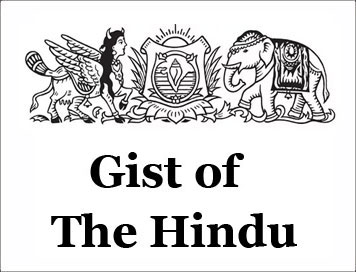Provide income support, restore jobs
(The Hindu)
Mains Paper 2: National
Prelims level: Labour laws
Mains level: Constitutional and political questions raises concern the
abrogation of labour laws
Context:
- Following the adage, “never waste a crisis”, the government of Uttar
Pradesh, last week, introduced an ordinance that has scrapped most labour
laws for three years — ostensibly for creating jobs and for attracting
factories exiting China following the outbreak of the novel coronavirus.
- These laws deal with the occupational safety, health and working
conditions of workers, regulation of hours of work, wages and settlement of
industrial disputes. They apply mostly to the economy’s organised(formal)
sector, that is, registered factories and companies, and large
establishments in general.
- Madhya Pradesh and Gujarat have quickly followed suit. Reportedly,
Punjab has already allowed 12-hour shifts per day (72 hours per week) in
factories without overtime payment to overcome worker shortage after the
migrants have left in the wake of the national lockdown.
Snatching away labour rights:
- Snatching away labour rights in the midst of a global pandemic and
national lockdown is distressing and shocking. Over the course of the last
seven weeks, we have witnessed unheard of human distress as lakhs of migrant
.............................................
CLICK HERE FOR FULL EDITORIAL (Only for Course Members)
Opposition from trade union:
- Employers’ associations have urged the central government to do away
with most labour rights to address temporary labour shortages.
- Trade union leaders from the Bharatiya Mazdoor Sangh to the Centre of
Indian Trade Unions, and Opposition leaders in Uttar Pradesh have condemned
the ordinance. It will face a challenge in courts, legal experts say.
Constitutional and political questions:
- The abrogation of labour laws raises many constitutional and political
questions. But will it expand employment and output growth, as claimed by
its proponents?
- Such a step, by popular belief, will reduce wage costs, increase profits
and augment productive investment and growth. Improved supply is expected to
create demand (following Say’s Law in economics). Such (simplistic)
reasoning assumes that labour laws are the binding constraints on expanding
output.
- Surely, the lockdown has disrupted supply, but only temporarily. There
are no inherent shortages at the moment as the inflation rate remains
moderate.
- Agricultural produce is rotting in farms for lack of transport.
Industrial production is held up as migrant workers have fled for their
lives.
Income support:
- Before the lockdown, annual GDP growth rate had plummeted to 4.7% during
October-December quarter of 2019-20, from 8.3% in the full year of 2016-17.
The slowdown is due to lack of demand, not of supply, as widely suggested.
- With massive job and income losses after
the..................................
CLICK HERE FOR FULL EDITORIAL (Only for Course Members)
More questions:
- The rationale for scrapping labour laws to attract investment and boost
manufacturing growth poses two additional questions.
- One, if the laws were in fact so strongly pro-worker, they would have
raised wages and reduced business profitability. But the real wage growth
(net of inflation) of directly employed workers in the factory sector has
been flat (2000-01 to 2015-16) as firms have increasingly resorted to
casualisation and informalisation of the workforce to suppress workers’
bargaining power, evidence suggests.
- Two, is it right to blame the disappointing industrial performance
mainly on labour market regulations? Industrial performance is not just a
function of the labour laws but of the size of the market, fixed investment
growth, credit availability, infrastructure, and government policies.
- In fact there is little evidence to suggest that amendment of key labour
laws by Rajasthan and Madhya Pradesh in 2014 took them any closer to their
goal of creating more jobs or industrial growth. The role of labour market
regulations may be more modest than the strong views expressed against them
in the popular debates.
Rationalise labour laws:
- Surely, India’s complex web of labour laws, with around 47 central laws
and 200 State laws, need rationalisation. However, now more than ever
before, reforms need to maintain a delicate balance between the need for
firms to adapt to ever-changing market conditions and workers’ employment
security.
- Depriving workers of fundamental rights such as freedom of association
and the right to collective bargaining, and a set of primary working
conditions (such as adequate living wages, limits on hours of work and safe
and ..............................................
CLICK HERE FOR FULL EDITORIAL (Only for Course Members)
Conclusion:
- As India battles the economic and social consequence of the COVID-19
pandemic, many State governments have seized the opportunity to scrap labour
laws on the pretext of encouraging employment.
- Such a decision makes little economic sense currently, as it will reduce
share of wages in output, thereby reducing growth in domestic demand and
hurting output expansion. Significantly, exports cannot be an option for now
as the global economy is staring at the possibility worse than the Great
Depression.
- Hence, the Uttar Pradesh government’s move will only result in a race to
the bottom on workers’ pay and labour standards, making workers worse off,
without creating additional jobs, as it is a lack of demand that is
currently holding up output growth. The Uttar Pradesh ordinance needs to be
revoked, lock, stock, and barrel.






